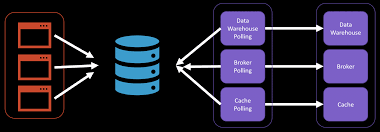To set up a topology for a File System and Oracle Database connection in Oracle Data Integrator (ODI), and perform reverse engineering and mapping to transfer data from files to Oracle database tables, follow these steps:
- Create a File System Data Server:
- In ODI Studio, open the Topology Navigator.
- Right-click on “Technologies” and select “New Data Server.”
- Provide a name for the data server (e.g., “File System”) and select the appropriate technology (“File”).
- Configure the connection details for the File System, such as the directory path, credentials, and any additional settings.
- Test the connection to ensure it is successful.
- Create an Oracle Database Data Server:
- In the Topology Navigator, right-click on “Technologies” and select “New Data Server.”
- Provide a name for the data server (e.g., “Oracle Database”) and select the appropriate technology (“Oracle”).
- Configure the connection details for the Oracle Database, such as the host, port, service name, credentials, and any additional settings.
- Test the connection to ensure it is successful.
- Define Physical and Logical Schema:
- In the Topology Navigator, expand the “Physical Architecture” and right-click on “Data Servers.”
- Select “New Physical Schema” and provide a name for the schema (e.g., “File_System_Schema”).
- Associate the Physical Schema with the File System Data Server created in step 1.
- Repeat the above steps to create a Physical Schema for the Oracle Database connection.
- Reverse Engineer the Models:
- In the Designer Navigator, right-click on “Models” and select “Import from Data Server.”
- Choose the File System Data Server and the Physical Schema associated with it.
- Select the files or folders you want to reverse engineer into ODI models.
- Follow the wizard to complete the reverse engineering process.
- Repeat the above steps to reverse engineer the Oracle Database tables into ODI models.
- Create the Mapping:
- In the Designer Navigator, right-click on “Mappings” and select “New Mapping.”
- Provide a name for the mapping and select the appropriate source and target models (File System and Oracle Database tables).
- Drag and drop the source files and target tables onto the mapping canvas.
- Create the necessary transformations and mappings between the source and target objects.
- Define the data flow, apply any necessary filters or expressions, and handle any required mapping logic.
- Execute the Mapping:
- Save the mapping and close the Mapping Editor.
- In the Designer Navigator, expand “Projects” and locate the mapping.
- Right-click on the mapping and select “Generate” to generate the necessary execution code.
- Right-click on the mapping again and select “Execute” to execute the mapping.
- Monitor the execution and review the logs for any errors or issues.
By following these steps, you can set up the topology for a File System and Oracle Database connection in ODI, perform reverse engineering to import models from the File System and Oracle Database, and create a mapping to transfer data from files to Oracle database tables.
SHARE
